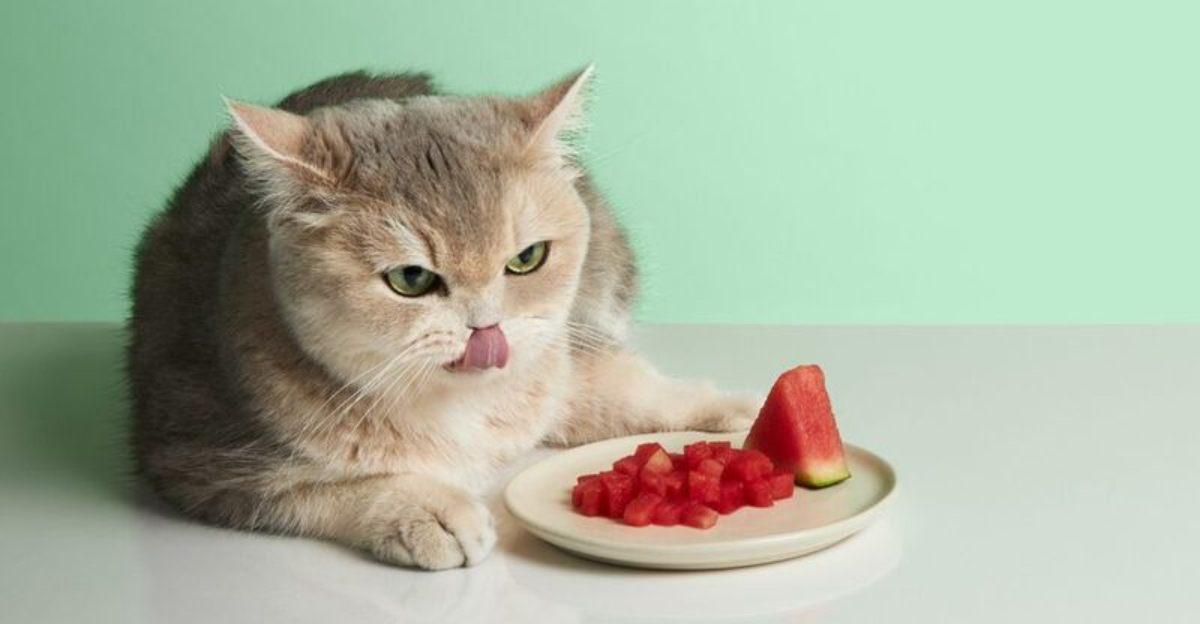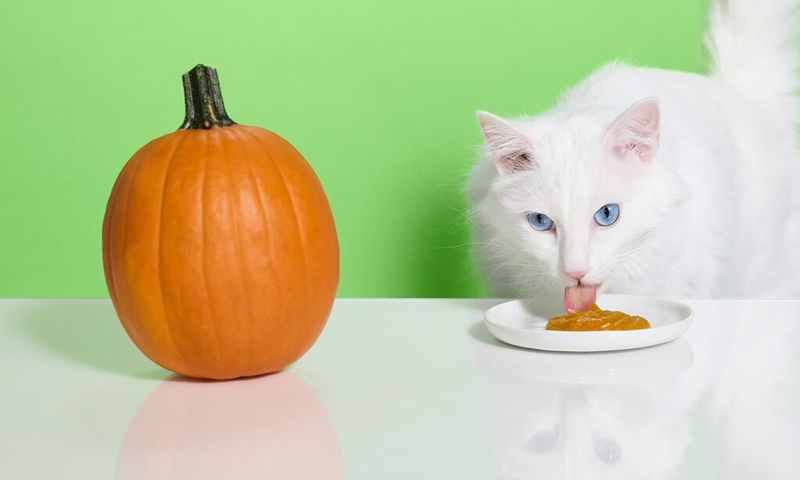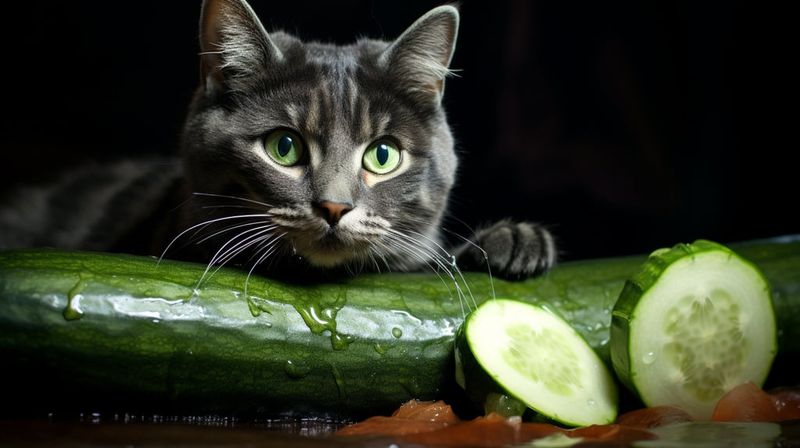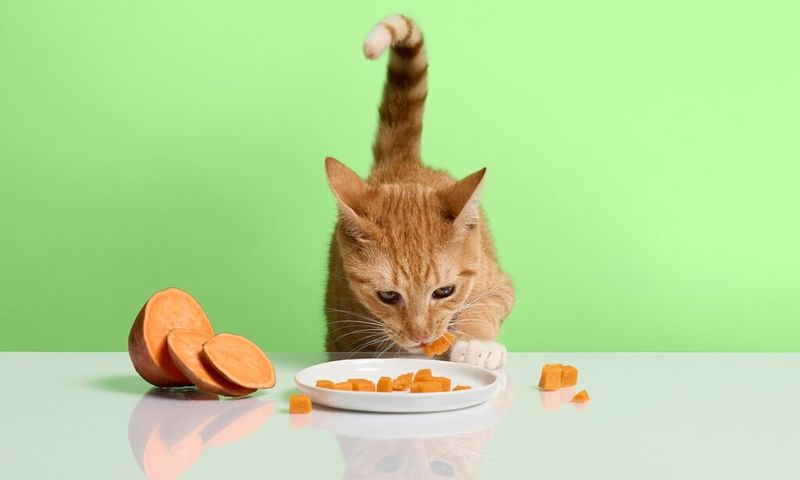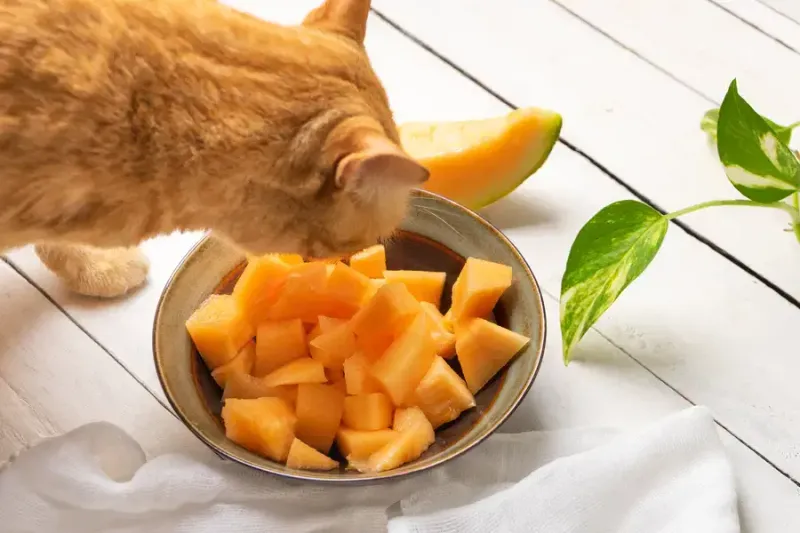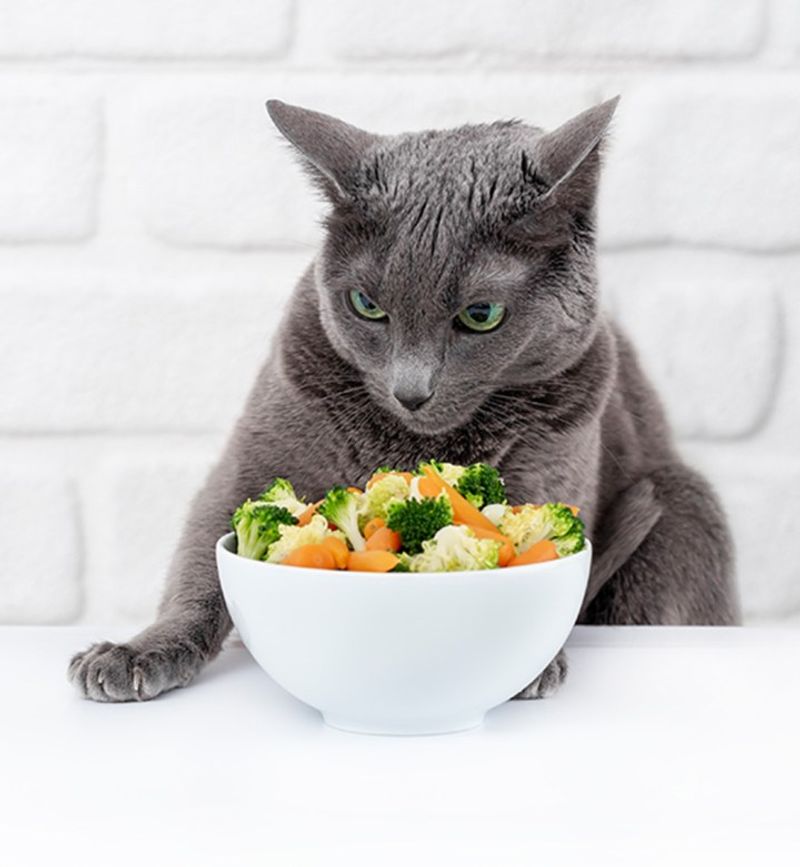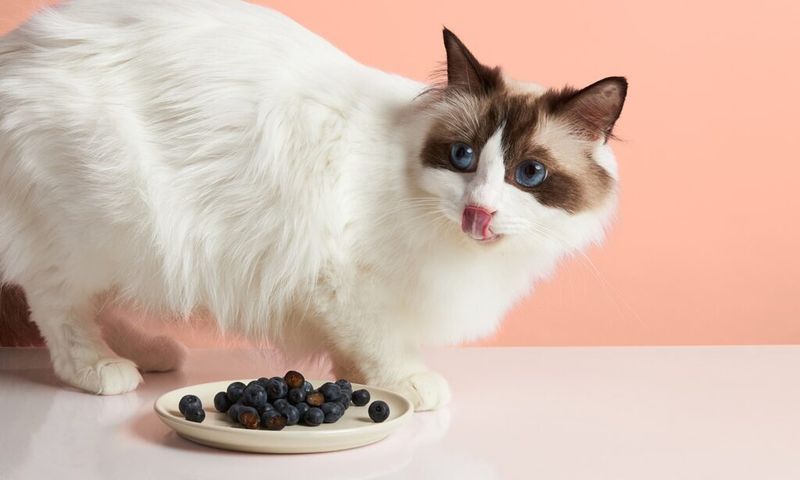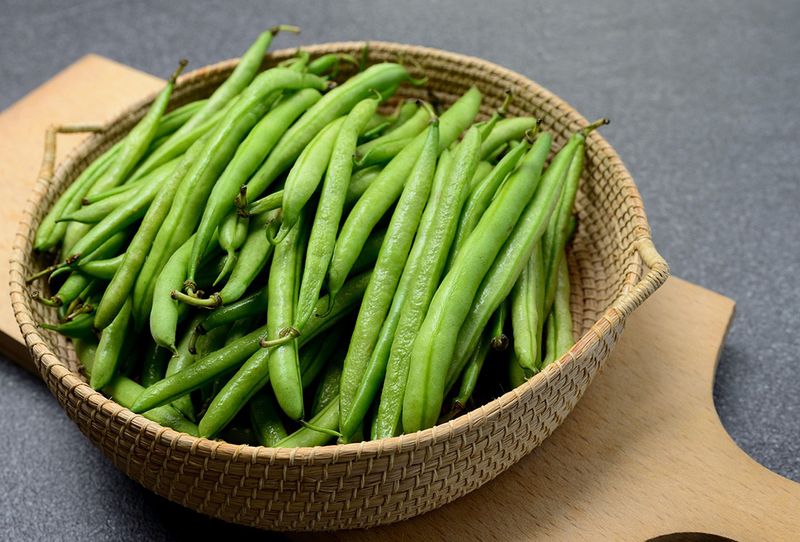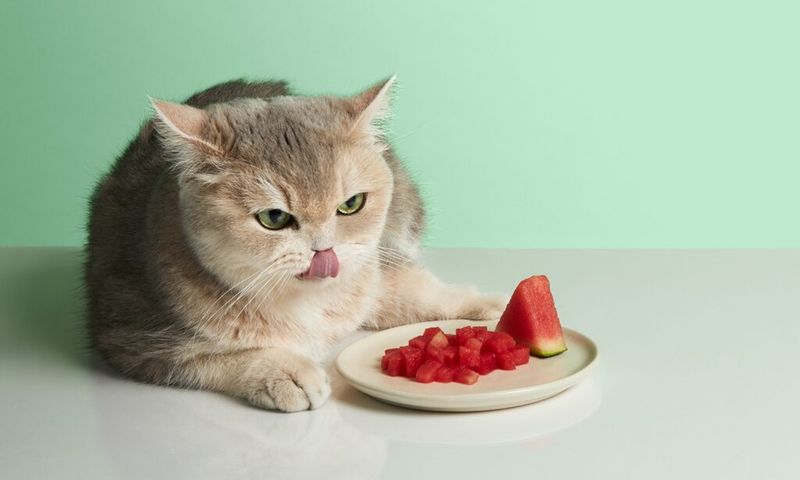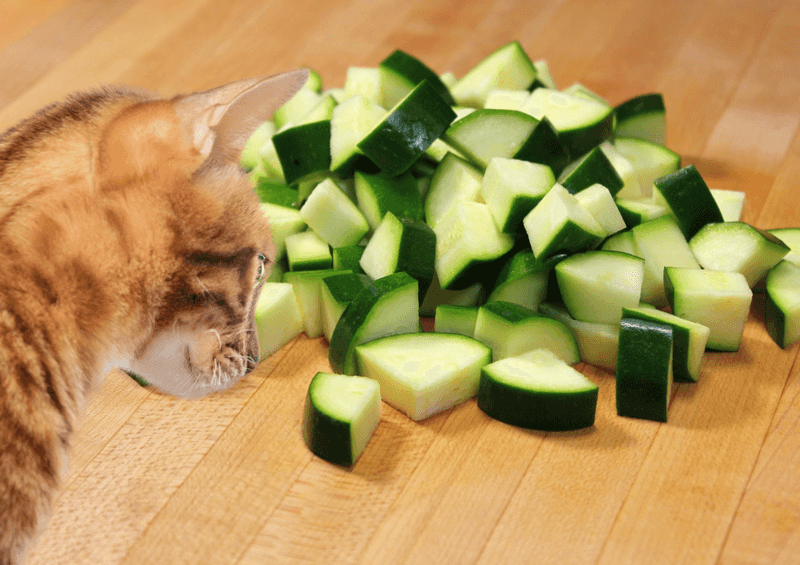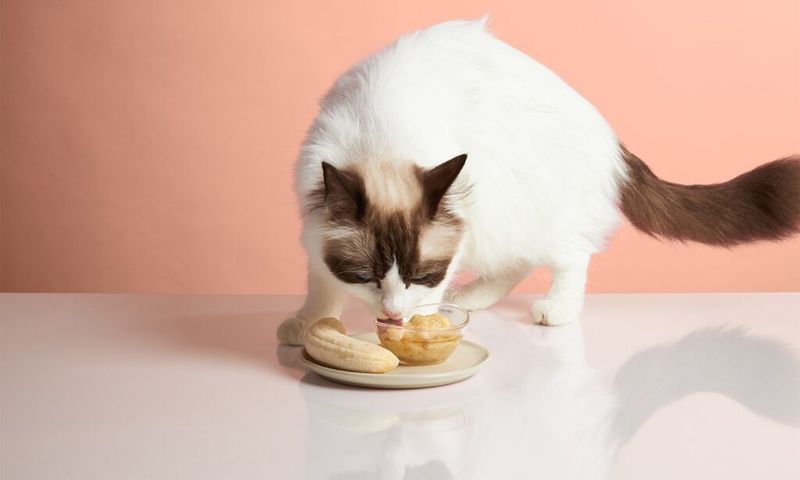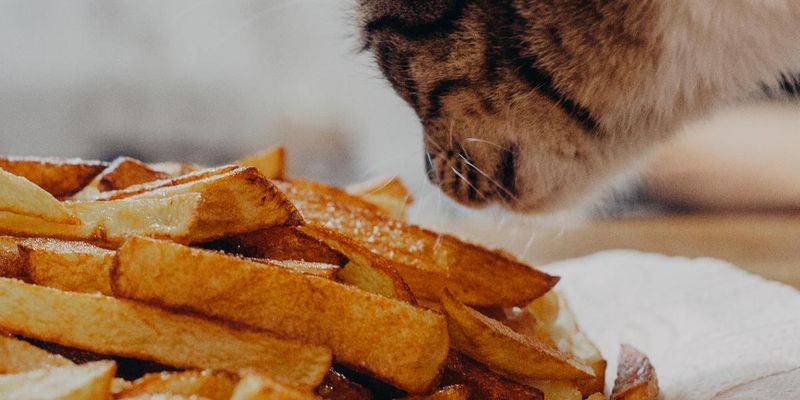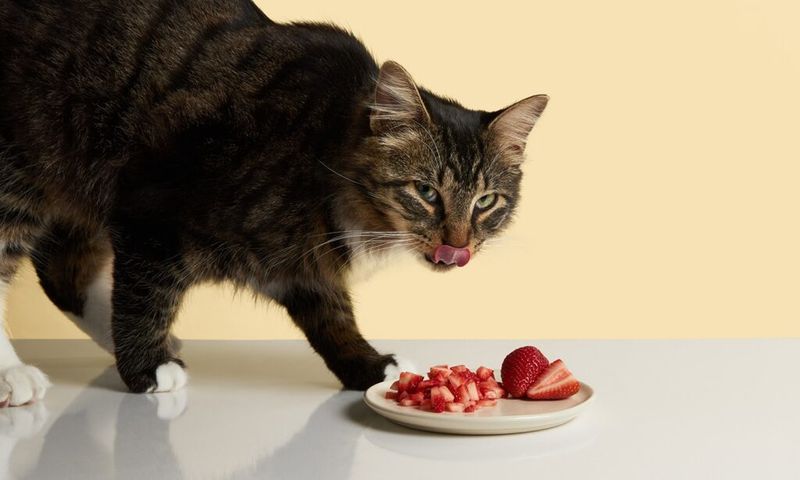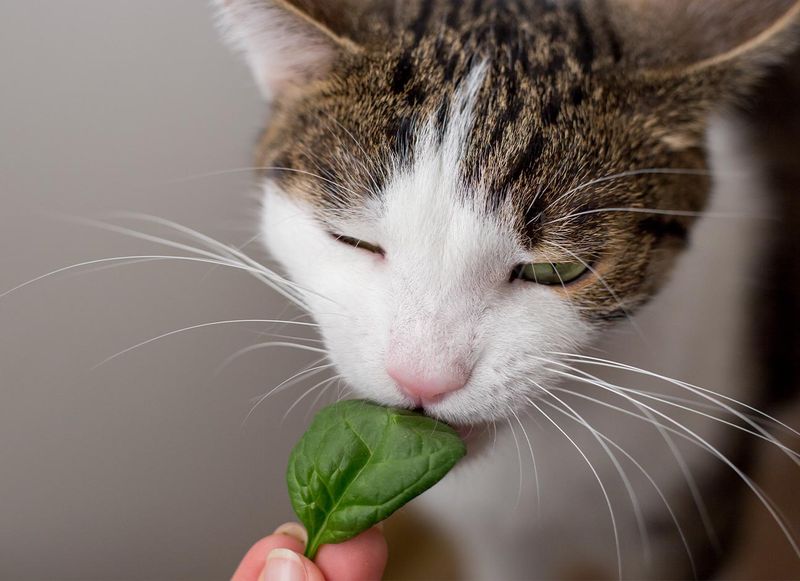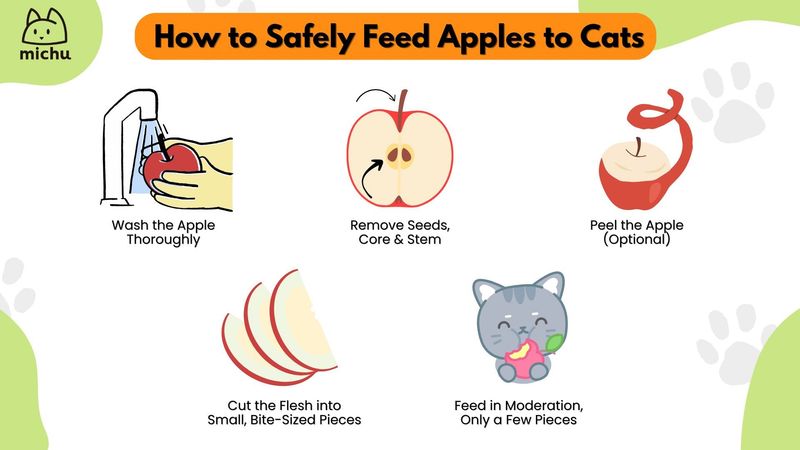📖 Table of Content:
Cats are primarily carnivores, but many felines enjoy nibbling on certain fruits and vegetables as occasional treats. Adding small amounts of produce to your cat’s diet can provide extra nutrients, hydration, and enrichment. Before sharing your salad with your furry friend, it’s important to know which plant foods are safe for cats and which could cause harm.
1. Pumpkin Puree
Raw pumpkin rarely appeals to cats, but plain cooked pumpkin puree often becomes an instant hit. This orange superfood supports digestive health and can help resolve both constipation and diarrhea issues in cats. Serve only plain pumpkin – never pie filling which contains harmful spices. Just a teaspoon mixed into regular food provides fiber and moisture without excess calories. Many veterinarians recommend keeping canned pure pumpkin (not pumpkin pie filling) in your pantry as a natural remedy for minor digestive upsets in cats. The smooth texture makes it easy to mix with regular food.
2. Cucumber Slices
Fresh cucumber provides hydration with minimal calories, making it an excellent summer treat for cats. The crisp texture intrigues many felines, though some may just bat it around rather than eat it. Always wash cucumbers thoroughly and cut into thin, bite-sized pieces to prevent choking. Remove seeds if your cat has a sensitive stomach. Cucumber contains vitamins K and C plus potassium, offering subtle nutritional benefits alongside hydration. Many cats enjoy the cooling effect during hot weather, making cucumber a refreshing seasonal snack for adventurous eaters.
3. Cooked Carrots
Vibrant orange carrots pack beta-carotene and fiber that support feline eye health and digestion. Most cats prefer them steamed until soft rather than raw, which proves difficult for them to chew properly. Mash cooked carrots slightly or cut into tiny pieces before offering. Skip butter, salt, or seasonings – plain is safest. The natural sweetness appeals to some cats while others remain skeptical. Freezing small portions of pureed cooked carrot creates convenient treats for later use. Start with just a half-teaspoon to test your cat’s interest before offering more. Their reaction might surprise you!
4. Cantaloupe Chunks
Mysteriously, many cats show an immediate attraction to cantaloupe’s aroma. The sweet scent contains compounds similar to those in meat proteins, explaining this unexpected feline favorite. Remove all rinds and seeds before offering small pieces as an occasional treat. The high water content makes cantaloupe particularly refreshing during warmer months. Cantaloupe delivers vitamins A and C plus antioxidants in a naturally sweet package. Limit portions to a few small cubes since the natural sugar content means this should remain an occasional indulgence rather than a dietary staple.
5. Steamed Broccoli
Miniature green trees might capture your cat’s curiosity! Lightly steamed broccoli florets offer fiber, vitamins C and K, plus folate in a cat-safe package. The unique texture and shape often fascinate felines who enjoy batting around small florets. Serve only the floret portion without stems, which can be tough and stringy. Ensure it’s cooled completely and cut into tiny, manageable pieces. Avoid raw broccoli which proves difficult to digest and skip seasonings entirely. Some cats enjoy nibbling the soft tops while others prefer playing with this unusual green treat. Either way, it provides environmental enrichment!
6. Blueberries
These tiny antioxidant powerhouses make perfect bite-sized treats for adventurous cats. Fresh or frozen (thawed) blueberries provide manganese, vitamins C and K, plus fiber in a naturally sweet package. Their small size requires minimal preparation – simply wash thoroughly and offer whole. The novelty of rolling berries often entertains cats even if they don’t eat them immediately. Blueberries contain natural compounds that support urinary tract health, making them especially beneficial for cats prone to UTIs. Introduce just one berry initially to gauge interest – some cats become immediate fans while others prefer just batting them across the floor.
7. Green Beans
Crunchy yet tender green beans often appeal to texture-focused felines. These low-calorie veggies make excellent treats for overweight cats who need satisfaction without extra pounds. Steam beans until slightly soft, then cool completely before cutting into small, manageable pieces. The mild flavor rarely overwhelms even picky eaters. Green beans provide fiber, vitamins A, C, and K without significant calories. Many veterinarians recommend them as healthy fillers for cats on weight management programs. Their versatility allows serving them slightly crunchy or very soft depending on your cat’s preference.
8. Watermelon Flesh
Juicy watermelon offers impressive hydration benefits, especially for cats who don’t drink enough water. The high moisture content supports kidney function and overall hydration during hot weather. Remove all seeds and rind completely – serve only the pink flesh cut into small, manageable pieces. The subtle sweetness attracts many cats while the high water content makes it refreshing. Watermelon contains vitamins A and C plus the antioxidant lycopene. Keep portions small since natural sugars mean this should remain an occasional treat. Freezing tiny watermelon cubes creates refreshing summer treats that entertain while hydrating.
9. Cooked Zucchini
Mild-flavored zucchini often appeals to cats who shy away from stronger-tasting vegetables. Steaming until tender preserves nutrients while creating a texture many cats find appealing. Rich in potassium, manganese, and vitamins A and C, zucchini provides nutrition without excess calories. Cut cooked pieces into small, manageable bites and serve plain without oils or seasonings. The high moisture content supports hydration while the soft texture proves easy to eat. Some cats enjoy the seeds while others prefer seedless portions – observe your cat’s preference and adjust accordingly. Start with just a small piece to test interest.
10. Banana Slices
Potassium-rich bananas offer a novel texture experience that intrigues some feline food critics. The soft, slightly sweet flesh provides easy eating for cats willing to try something different. Start with a tiny piece – just a fingernail-sized portion – to gauge interest. Some cats become immediate fans while others show complete disinterest. Bananas contain B6, manganese, and fiber alongside potassium. Their natural sweetness means they should remain an occasional treat rather than a regular offering. Mashing a small amount into regular food sometimes appeals to cats who ignore slices.
11. Cooked Sweet Potato
Vibrant orange sweet potatoes deliver beta-carotene, vitamins C and B6, plus manganese in a naturally sweet package. Always serve cooked – never raw – and without butter, salt or seasonings. Baking or steaming preserves nutrients while creating a soft texture most cats can manage easily. Cool completely before offering small portions mashed or cut into tiny cubes. Sweet potatoes provide complex carbohydrates and fiber that support digestive health. Their natural sweetness appeals to some cats while others remain skeptical. Start with just a pea-sized amount to test your cat’s interest before offering more.
12. Strawberry Pieces
Bright red strawberries occasionally capture feline curiosity with their unique aroma and texture. These antioxidant-rich berries provide vitamin C, manganese, and folate in a naturally sweet package. Remove leaves and stems completely before offering tiny pieces – about the size of your cat’s kibble. Wash thoroughly to remove pesticide residues, especially important for curious cats. The novelty factor often proves more interesting than the taste, with many cats batting pieces around playfully. Their high water content supports hydration while the fiber aids digestion. Limit to occasional treats due to natural sugar content.
13. Spinach Leaves
Iron-rich spinach offers impressive nutritional benefits for most healthy cats. The tender leaves provide vitamins A, C, and K plus iron and antioxidants that support overall wellness. Serve either finely chopped raw leaves or lightly steamed for easier digestion. Many cats prefer the softer texture of steamed spinach, which also makes nutrients more accessible. Avoid spinach for cats with history of calcium oxalate bladder stones, as compounds in spinach may contribute to this specific condition. For healthy cats without this issue, small amounts occasionally provide excellent nutritional benefits with minimal calories.
14. Winter Squash
Butternut, acorn, and other winter squashes provide beta-carotene, fiber, and vitamins in a naturally sweet package many cats enjoy. Always serve cooked until very soft – never raw – and without added seasonings. The natural sweetness appeals to cats with a curious palate. Start with just a half-teaspoon of plain cooked squash to test interest before offering more. Winter squash supports digestive health and provides gentle fiber similar to pumpkin. Its smooth texture when cooked makes it easy to mix into regular food for reluctant eaters. Store portions in ice cube trays for convenient single servings.
15. Apple Pieces
Crisp apple flesh occasionally appeals to texture-focused felines. The fiber, vitamins A and C, plus antioxidants provide nutritional benefits in a satisfyingly crunchy package. Remove all seeds, core, and stems which contain harmful compounds. Cut flesh into tiny, manageable pieces about the size of your cat’s kibble. Some cats enjoy the crunch while others show little interest. The novelty factor often proves most appealing, with many cats batting pieces around playfully. Limit portions due to natural sugar content and always serve plain without cinnamon or other spices.
